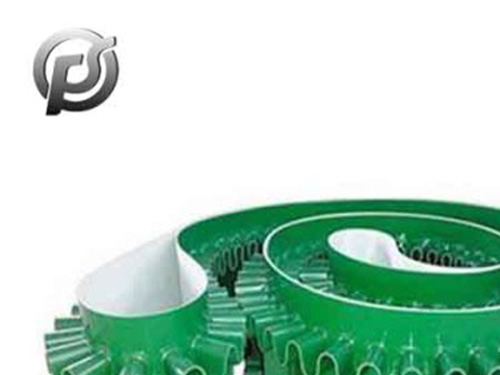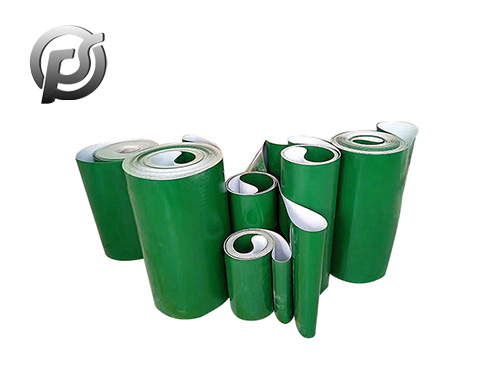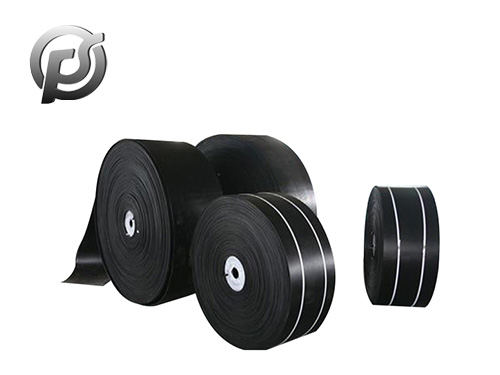Reasons for mine
conveyor belt fire There are many reasons for conveyor belt fire, some caused by its own failure, and some caused by external fire sources. This paper mainly analyzes the cause of fire caused by its own fault.
1.1 Roller slip causes fire
(1) The rubber or wood lining covered by the driving drum is worn (a basic type of component failure) seriously, which reduces the friction coefficient and causes the conveyor belt to slip.
Storage and transportation conditions of rubber conveyor belt: In storage and transportation, fire should be isolated, sharp instruments and corrosive chemicals should be avoided, and long-term storage under the sun should be avoided.
(2) The wet surface of the driving drum causes the conveyor belt to slip, such as coal out of water.
(3) Coal buried at the head of the machine will cause coal to enter between the surface of the drum and the conveying, which will reduce the friction coefficient and cause the conveyor belt to slip.
(4) The driven roller bearing is damaged and stuck, resulting in the driven roller's speed decreasing or not rotating, causing the conveyor belt to slip relative to the roller.
Whether driving drum or driven drum, as long as the occurrence of skid phenomenon, the surface temperature of the drum will rise rapidly. According to statistics, the conveyor belt skidded for about 40 minutes.
When the surface temperature of the drum reaches about 320℃, the conveyor belt will begin to smoke. 320℃ is the critical ignition temperature.
Therefore, the roller skid is very harmful, long time skid can lead to the conveyor belt fire, resulting in safety accidents. Heat resistant conveyor belt made of multi-layer rubber cotton canvas.
(polyester cotton) or polyester canvas is covered with high temperature or heat resistant rubber, vulcanized together by high temperature, suitable for conveying hot coke, cement, slag and hot castings below 175℃.
1.2
Idlers cause fire. In recent years, the temperature rise of idlers caused by idlers not rotating is one of the main causes of coal mine conveyor belt fire.
The rubber conveyor belt and coal run together on the roller, which is both a traction mechanism and a bearing mechanism. There is no relative movement between the coal and the conveyor belt.
The friction resistance between coal and conveyor belt is eliminated. As the roller is equipped with rolling bearings, there is rolling friction between the heat-resistant conveyor belt and the roller, and the running resistance is very small.
However, due to poor underground environmental conditions, it is easy to enter coal dust inside the roller bearing, which will cause the bearing to stick. After the conveyor belt is stuck on the surface of the roller friction running, will make the roller temperature rise.
It is observed that the conveyor belt fire caused by the friction of idlers is generally after the shutdown. Before shutdown, the belt runs at a speed of 1 ~ 3trds, and the contact time between the fixed point on the conveyor belt and the surface of the roller is short.
The temperature of the conveyor belt increases very little. Moreover, the air flow generated during the operation of the conveyor belt can also reduce the surface temperature of the roller. Therefore, in normal operation, even if there is friction, the conveyor belt is not easy to fire.
After the machine stops, the lower supporting roller will stop rotating. The non-rotating lower supporting roller is the main cause of fire. Because there is a certain amount of pulverized coal around the lower roller, which is surrounded by pulverized coal and radiates the roller
Conditions will become worse, thus causing fire, especially in the unloading drum and the tail drum at the lower roller.
1.3 Necessity of drum friction test
The so-called drum friction test means that when the conveyor belt sample passes the drum friction test, flame and flameless combustion shall not occur in any part of it, and the surface temperature of the drum shall not be greater than 325℃.
The conveyor belt sample was installed in the drum friction test device, and the upper and lower covering layers were tested in the static air and the flowing air respectively. A tension of 343N was applied during the test.
The roller rotates away from the fixed end of the sample at a speed of (200.4-5)r/min. If the conveyor belt sample breaks within 60min, the test will be stopped; if it does not break, the test will continue until 60min.
During the test, the test personnel should stick to the test site, observe whether the sample has flame combustion or flame combustion phenomenon at any time, and record the test time and the highest temperature of the drum surface.
The drum friction test simulates (definition: the virtual of a real thing or process) the most severe environmental conditions during the operation of the belt conveyor (also known as the belt conveyor).
That is, the conveyor belt directly fricts with the steel rolling Jane, and the conveyor belt cannot have flame burning and flame burning phenomenon. In the laboratory on the flame retardant conveyor belt drum friction test,
The smoking temperature of the whole fabric core flame retardant conveyor belt is about 220 ~ 250oC, and the smoking temperature of the wire rope core flame retardant conveyor belt is about 250 ~ 280oC, and there is no flame combustion and no flame combustion phenomenon. But it will also
The temperature exceeds the specified value and reaches 360oC or even higher, accompanied by combustion phenomenon. It is worth noting here that the fabric core flame retardant conveyor belt and
The fire temperature of wire rope core flame retardant conveyor belt is 280300℃ and 320-340oC respectively, and the temperature is close to the pulverized coal smoking temperature of 330 ~ 350o
C, fire temperature 420 ~ 440oC, such as improper management and use of conveyor belt is easy to cause fire. Fire is the most serious accident of belt conveyor, once it happens, it will cause great casualties
Accidents and huge property damage. Therefore, it is very necessary to carry out the roller friction test before the conveyor belt goes down the well.
2 Maintenance Management
2.1
Daily inspection, shorten storage, pay attention to do high temperature prevention, corrosion prevention, moisture and other regular inspection. Before the use of the relevant units for inspection, to ensure that the use of conveyor belt
Coal Mine Safety Regulations and related technical standard requirements.
2.2
Conveyor inspection, the roller should rotate flexibly, fasteners firmly, bearing lubrication is good; Body rollers (supporting conveyor belt and material weight) should be complete, flexible rotation; H frame and beam frame should be stable.
No skew phenomenon; The tensioning device should be complete, the tensioning is suitable, the conveyor belt does not slip; The cleaning device should work well, especially the cleaning device at the unloading drum and tail drum.
To clean the conveyor belt surface without floating coal, debris, etc.
2.3
Protective device, conveying machine to install temperature, speed, smoke, coal and other protective devices, the device should be sensitive and reliable, in order to stop the problem in time, reduce the scope of the accident.
2.4
Improve the environment of the roadway, in order to improve the environment of the roadway, it is necessary to reduce the roadway water, as far as possible to make the water flow down the shaft wall, when necessary, but also adopt waterproof plugging, grouting plugging or engineering sealing measures.
For acid ore water to prevent the main, try to avoid acidic water dripping on the conveyor belt. The roadway should be kept clean and sanitary, especially the slime under the conveyor belt at the bottom of the conveyor
To clean often, ensure that the bottom roller (supporting the conveyor belt and material weight) normal operation.
 Stone Conveyor Belt: Enhancing Efficiency and Productivity in Material Handling
Stone Conveyor Belt: Enhancing Efficiency and Productivity in Material Handling
 Optimizing Operations with PE Conveyor Belts: Durability, Efficiency, and Versatility
Optimizing Operations with PE Conveyor Belts: Durability, Efficiency, and Versatility
 Exploring the Efficiency and Versatility of Light Conveyor Belts
Exploring the Efficiency and Versatility of Light Conveyor Belts